
The Legend of Zelda: Majora's Mask is a 2000 action-adventure game developed and published by Nintendo for the Nintendo 64. It was the second The Legend of Zelda game to use 3D graphics, following Ocarina of Time (1998). Designed by a creative team led by Eiji Aonuma, Yoshiaki Koizumi, and Shigeru Miyamoto, Majora's Mask was completed in less than two years. It featured enhanced graphics and several gameplay changes, but reused a number of elements and character models, which the game's creators called a creative decision made necessary by time constraints.
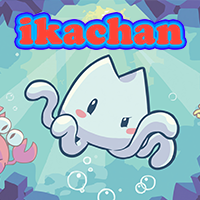
Ikachan (いかちゃん) is a freeware video game created by Japanese developer Daisuke Amaya, under the art name Pixel. In the game, the player plays a squid named Ikachan, who swims through a cave, meeting and helping other creatures. The game was later released by Nicalis for the Nintendo 3DS eShop on January 31, 2013. On November 30, 2016, Japanese publisher Pikii released the game on the Japanese eShop.

Imageepoch Inc. was a video game developer based in Tokyo, Japan.
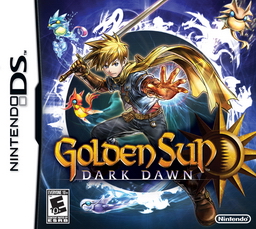
Golden Sun: Dark Dawn is a role-playing video game developed by Camelot Software Planning and published by Nintendo for the Nintendo DS. The third entry in the Golden Sun series, Dark Dawn was released in late 2010, becoming the fifth-best selling game during its release window in Japan.
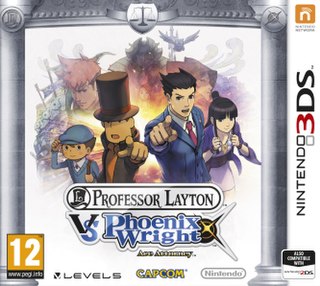
Professor Layton vs. Phoenix Wright: Ace Attorney is a visual novel adventure puzzle video game for the Nintendo 3DS, and was developed by both Capcom and Level-5, the latter publishing it in Japan while Nintendo published it worldwide. The game is a crossover between two games series from both developers, combining the puzzle and exploration elements of Level-5's Professor Layton series, and the general trial mechanics of Capcom's Ace Attorney adventure series, the latter enhanced by the addition of a few new elements. Shu Takumi, the series director for the Ace Attorney series, assisted with the scenario designs for the game. The plot focuses on Professor Layton and Phoenix Wright, along with their respective assistants, working together to solve the mystery behind a young girl that they both encounter separately, and a strange world they are brought to through her, with Layton focused on solving puzzles and finding clues to solve the mystery, while Wright focuses on defending people who are put on trial for being "witches".

Heroes of Ruin is an action role-playing game developed by n-Space and published by Square Enix for the Nintendo 3DS. It was released on June 15, 2012, in Europe and July 17 in North America. Square Enix London Studios worked with n-Space for the development.
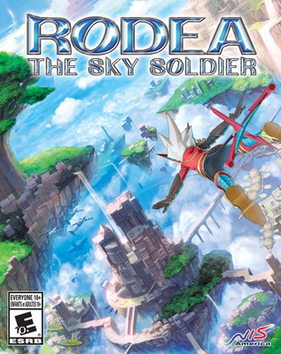
Rodea the Sky Soldier is an action-adventure game developed by Prope for the Wii and Kadokawa Games for the Wii U and Nintendo 3DS. The game stars Rodea, an android who possesses the ability to fly and a "heart". These traits result in Rodea becoming a soldier in order to fulfill his promise of protecting the kingdom of Garuda, a series of islands that float in the sky, from the ground-based Naga Empire and its leader, Emperor Geardo. Although development was completed in 2011, Rodea the Sky Soldier went unreleased for four years until it finally saw a release in Japan in April 2015, and then a subsequent worldwide release in November 2015. The Wii version was the last game released for that platform in Japan.

Mario Tennis Open is a 2012 Mario sports game developed by Camelot Software Planning and published by Nintendo for the Nintendo 3DS. The game was developed by Camelot, the company that produced most of the previous Mario Tennis titles. The game was first released on May 20, 2012 in North America and in other regions the same month. It was later released as a downloadable title on the Nintendo eShop in late 2012 and Nintendo Selects in 2015/2016.

Epic Mickey: Power of Illusion is a side-scrolling platform game developed by DreamRift and published by Disney Interactive Studios for the Nintendo 3DS in 2012. It is a third part of the Epic Mickey series, released alongside Epic Mickey 2: The Power of Two, and is touted as a tribute to Sega's Illusion series of Mickey Mouse games, particularly Castle of Illusion Starring Mickey Mouse.

Liberation Maiden is a shooter game developed by Grasshopper Manufacture and published by Level-5. It was originally included in the Guild01 compilation for the Nintendo 3DS in 2012, and later made available separately on Nintendo eShop. A stand-alone high definition version was also released for the iOS in 2013.

Super Mario Maker is a 2015 side-scrolling platform game and game creation system developed and published by Nintendo for the Wii U, released worldwide in September 2015. Players can create, play, and share courses online, free of charge, based on the styles of Super Mario Bros., Super Mario Bros. 3, Super Mario World, and New Super Mario Bros. U. The game was revealed as the final challenge of Nintendo World Championships 2015.
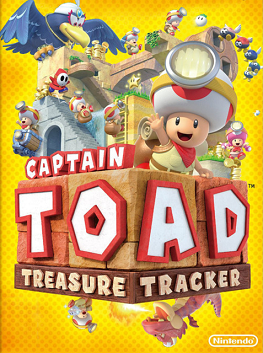
Captain Toad: Treasure Tracker is a 2014 action puzzle video game developed and published by Nintendo for the Wii U. The game was re-released for the Nintendo Switch and Nintendo 3DS in 2018 with additional content. It is a spin-off of the Super Mario series and a part of the larger Mario franchise. The game stars Captain Toad and Toadette as they complete levels and save each other from the antagonist Wingo. Each level is contained within a miniature diorama-like environment that requires puzzle-solving and platforming challenges to complete. The player also uses the Wii U GamePad to rotate the camera and reveal new information and interact with the environment.

Gunman Clive, released in Japan as Gunman Story is a platform game developed and published by Swedish development studio Hörberg Productions. It was first released for Android on 2 April 2012. The game follows Clive, a lone gunslinger in a futuristic Wild West, as he tries to save the mayor's daughter from a group of technologically well-armed bandits.
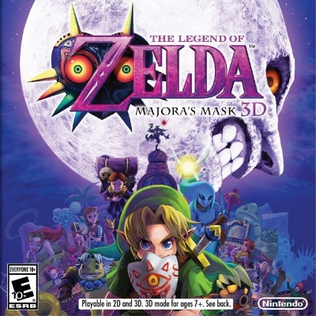
The Legend of Zelda: Majora's Mask 3D is an action-adventure game developed by Grezzo and published by Nintendo for the Nintendo 3DS handheld game console. The game is a remake of The Legend of Zelda: Majora's Mask, which was originally released for the Nintendo 64 home console in 2000. The game was released worldwide in February 2015, coinciding with the North American and European releases of the New Nintendo 3DS, to mostly positive reviews, with particular praise for its fast-paced gameplay, enhanced graphics, and quality of life changes.
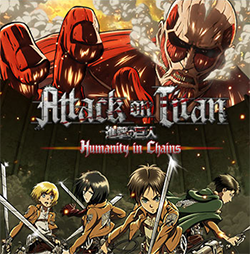
Attack on Titan: Humanity in Chains, known in Europe as Shingeki no Kyojin: Humanity in Chains, is an action game developed and published by Spike Chunsoft for the Nintendo 3DS, based on Hajime Isayama's Attack on Titan manga series. The game was originally released in Japan on December 5, 2013, with an updated version, Attack on Titan: Jinrei Saigo no Tsubasa CHAIN, released on December 4, 2014. This version of the game was localized by Atlus and released on the Nintendo eShop in North America on May 12, 2015, and in Europe on July 2, 2015.

The Legend of Zelda: Tri Force Heroes is an action-adventure game developed by Nintendo EPD and Grezzo and published by Nintendo for the Nintendo 3DS. The second original Nintendo 3DS entry in The Legend of Zelda series after A Link Between Worlds, this game is the third installment in the franchise to prominently feature a multiplayer campaign after Four Swords and Four Swords Adventures, albeit this time with only three players as opposed to four, wireless and online connectivity as opposed to the prior games' use of link cables, and a stronger emphasis on cooperation rather than competition.
Heavy Fire is a series of on-rails arcade shooter video games developed by Polish video game developer Teyon between 2010 and 2013 and Anshar from 2018 to present. The series includes five games: Heavy Fire: Special Operations (2010), Heavy Fire: Black Arms (2011), Heavy Fire: Afghanistan (2011), Heavy Fire: Shattered Spear (2013), and Heavy Fire: Red Shadow (2018).

Luminous Arc is a series of tactical role-playing video games originally developed by Imageepoch, prior to the company's bankruptcy. The series began with the 2007 release of Luminous Arc for the Nintendo DS, with its most recent game being the 2015 Japan-only release of Luminous Arc Infinity. The series also saw a spiritual successor in the 2015 Nintendo 3DS game Stella Glow.
















